
Hippotion celerio, the vine hawk-moth or silver-striped hawk-moth, is a moth of the family Sphingidae. It was described by Carl Linnaeus in his 1758 10th edition of Systema Naturae.

Corcobara is a monotypic moth genus of the family Erebidae first described by Frederic Moore in 1882. Its only species, Corcobara angulipennis, described by the same author in the same year, is found in India, Thailand, Cambodia, Myanmar, Malaysia, Indonesia, New Guinea, Sri Lanka and the Solomons.
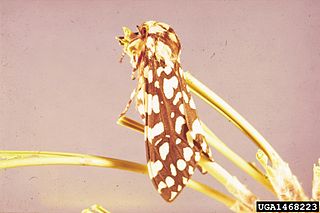
Lophocampa ingens is a moth of the family Erebidae. It was described by Henry Edwards in 1881. It is found in the southern Rocky Mountains and in Mexico.

Grammodes stolida, the geometrician, is a moth of the family Erebidae. The species was first described by Johan Christian Fabricius in 1775. It is found in Africa, southern Europe, most of Asia and Australia. It migrates to central and northern Europe as far north as England, Denmark and Finland.

Graphium angolanus, the Angola white lady, is a species of butterfly in the family Papilionidae (swallowtails). It is found in Sub-Saharan Africa.
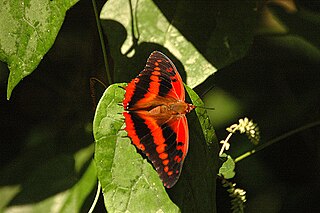
Charaxes cynthia, the western red charaxes, is a butterfly in the family Nymphalidae. It is found in Senegal, Guinea, Sierra Leone, Liberia, Ivory Coast, Ghana, Nigeria, Cameroon, Gabon, the Republic of the Congo, the Central African Republic, the Democratic Republic of the Congo, Uganda, Angola, Sudan, Uganda, Kenya, Tanzania and Zambia.
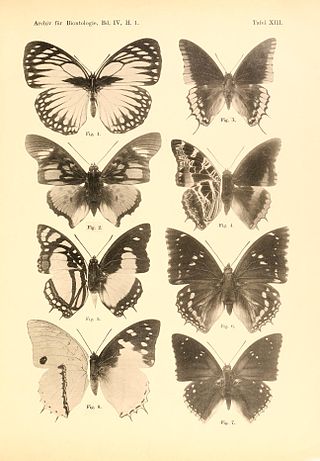
Charaxes acraeoides is a butterfly in the family Nymphalidae first described by Herbert Druce in 1908. It is found in Cameroon, Gabon, the Republic of the Congo, the Central African Republic and the Democratic Republic of the Congo.
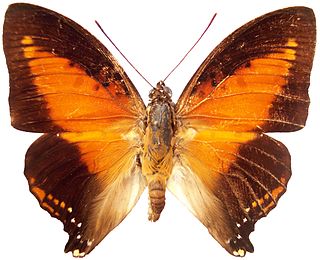
Charaxes zingha, the shining red charaxes, is a butterfly in the family Nymphalidae. It is found in Senegal, Guinea, Sierra Leone, Liberia, Ivory Coast, Ghana, Nigeria, Cameroon, the Republic of the Congo, Angola, the Central African Republic, the northern part of the Democratic Republic of the Congo, Uganda and western Tanzania. The habitat consists of lowland evergreen forests and sometimes gallery forests and coastal scrubland.

Euxanthe trajanus, the Trajan's forest queen, is a butterfly in the family Nymphalidae. It is found in Nigeria, Cameroon, Equatorial Guinea, Gabon, the Republic of the Congo, Angola, the Democratic Republic of the Congo, the Central African Republic and Uganda.

Euphaedra eleus, the Eleus orange forester, is a butterfly in the family Nymphalidae. It is found in Guinea, Sierra Leone, Liberia, Ivory Coast, Ghana, Nigeria, Cameroon, Gabon, the Republic of the Congo, Angola, the Democratic Republic of the Congo and Uganda. The habitat consists of primary forests and secondary forests with a closed canopy.
Euacidalia oroandes is a moth in the family Geometridae first described by Herbert Druce in 1893. It is found in Guatemala and Panama.
Meroctena zygialis is a moth in the family Crambidae. It was described by Herbert Druce in 1899. It is found in Xalapa, Mexico.
Phaedropsis calanticalis is a species of moth in the family Crambidae. It was described by Herbert Druce in 1895. It is found in Costa Rica.
Acrojana sciron is a moth in the family Eupterotidae. It was described by Druce in 1887. It is found in Cameroon, the Democratic Republic of Congo (Katanga), Equatorial Guinea and Sierra Leone.
Epijana cinerea is a moth in the family Eupterotidae. It was described by William Jacob Holland in 1893. It is found in the Democratic Republic of the Congo, Equatorial Guinea and Gabon.
Gonojana tristis is a moth in the family Eupterotidae. It was described by Druce in 1896. It is found in Gambia.
Stenoglene pira is a moth in the family Eupterotidae. It was described by Druce in 1896. It is found in South Africa and Tanzania.
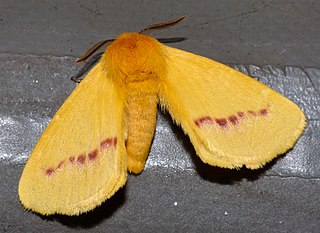
Stenoglene roseus is a moth in the family Eupterotidae. It was described by Druce in 1886. It is found in Burundi, the Democratic Republic of Congo, Ivory Coast, Kenya, Malawi, Mozambique, Nigeria and Uganda.
Stenoglene thelda is a moth in the family Eupterotidae. It was described by Druce in 1887. It is found in Cameroon, the Central African Republic, the Democratic Republic of Congo and Sierra Leone.
Hypercallia lydia is a moth in the family Depressariidae. It was described by Druce in 1901. It is found in Ecuador.











